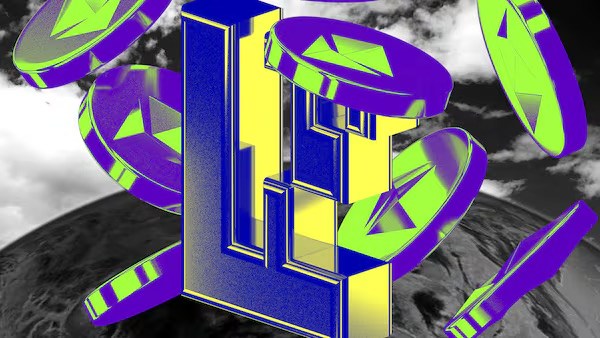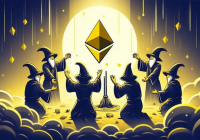Nvidia Earnings and Bitcoin: Assessing the Fading Correlation in a Shifting Market
- Nvidia and Bitcoin's historical correlation weakened from 0.80 to 0.36 in Q2 2025 as macroeconomic factors and regulatory risks overshadowed tech-sector momentum. - Bitcoin's post-earnings volatility spiked to 38% in Q2 2025, diverging from its typical pattern despite Nvidia's $46.7B revenue surge and AI growth forecasts. - Geopolitical risks (e.g., China export restrictions) and Bitcoin's unique drivers (halving, ETF approvals) now independently shape crypto markets. - Investors are advised to diversify
The relationship between Nvidia's quarterly earnings and Bitcoin's price action has long been a focal point for investors seeking to navigate the intersection of tech and crypto markets. For years, the two assets moved in sync, with Bitcoin often surging after Nvidia reported strong results. But recent data suggests this correlation is fraying, raising critical questions about the sustainability of the tech-crypto link in a rapidly evolving landscape.
The Historical Link: A Symbiotic Boom
From Q1 2023 to Q2 2025, Bitcoin posted positive price action in 7 out of 10 quarters following Nvidia's earnings reports. This pattern emerged as Nvidia's dominance in AI infrastructure—driven by surging demand for GPUs in data centers and AI training—became a bellwether for broader tech-sector optimism. Investors interpreted strong Nvidia results as a green light for risk assets, including Bitcoin.
For example, in Q2 2025, Nvidia reported $46.7 billion in revenue (up 56% YoY) and $1.05 in adjusted EPS, far exceeding expectations. Yet, while Bitcoin initially dipped to a seven-week low of $110,000 post-earnings, it quickly rebounded to $112,760. This volatility highlighted a growing disconnect: Bitcoin's short-term reaction diverged from its historical pattern, even as Nvidia's long-term narrative of AI-driven growth remained intact.
The Divergence: Why the Tech-Crypto Link Is Fraying
Several factors are eroding the once-strong correlation:
Macroeconomic Uncertainty Overshadows Tech Optimism
The broader market's sensitivity to Federal Reserve policy and inflation data has diluted the impact of individual earnings reports. For instance, Bitcoin's post-earnings dip in Q2 2025 coincided with anticipation of U.S. GDP figures and jobless claims, which overshadowed Nvidia's results.Regulatory and Geopolitical Headwinds
Nvidia's H20 chip sales to China—a potential $50 billion opportunity—remain stalled due to U.S. export restrictions. While the company's Q3 2025 guidance of $54 billion excluded China-related sales, the geopolitical uncertainty weighed on investor sentiment, indirectly affecting crypto markets.Bitcoin's Unique Fundamentals Take Center Stage
Bitcoin's price is increasingly driven by its own cycle, including halving events, regulatory developments (e.g., ETF approvals), and on-chain metrics. For example, the 2024 halving event and the SEC's delayed rulings on spot Bitcoin ETFs created independent tailwinds for crypto, reducing reliance on tech-sector momentum.Crowded AI Trades and Market Fatigue
As AI stocks like Nvidia became crowded trades, investors began to differentiate between AI-driven growth and broader tech-sector narratives. Bitcoin, meanwhile, faced its own challenges, with AI-themed tokens like Bittensor (TAO) and FET failing to rally in sympathy with Nvidia's performance.
The Data: A Closer Look at Post-Earnings Reactions
Nvidia's Q2 2025 earnings triggered a 38% spike in Bitcoin's daily volatility, the highest since early 2023. Yet, this volatility was short-lived. Within 48 hours, Bitcoin stabilized, trading 1.3% higher as the market digested Nvidia's guidance for $3–$4 trillion in AI infrastructure spending by 2030.
The key takeaway? While Nvidia's earnings still influence risk appetite, Bitcoin's trajectory is now shaped by a broader set of variables. This is evident in the weakening correlation coefficient between the two assets, which dropped from 0.80 in early 2024 to 0.36 in Q2 2025.
Investment Implications: Navigating the New Normal
For investors, the fading correlation between Nvidia and Bitcoin demands a nuanced approach:
Diversify Exposure to Tech and Crypto Narratives
Rather than treating Nvidia's earnings as a proxy for Bitcoin's direction, investors should evaluate each asset's fundamentals. For example, while Nvidia's AI dominance supports long-term tech growth, Bitcoin's near-term prospects hinge on macroeconomic data and regulatory clarity.Hedge Against Divergent Volatility
The post-earnings volatility in Q2 2025—where Bitcoin's daily volatility spiked to 38%—underscores the need for hedging strategies. Options with negative 25-delta skews (as seen in Q2 2025) can provide downside protection in a market where correlations are unreliable.Monitor Geopolitical and Regulatory Catalysts
Nvidia's potential to resume H20 sales to China and the U.S. government's stance on crypto ETFs are critical variables. A resolution in either arena could reignite the tech-crypto link—or further decouple the two.Rebalance Portfolios for Uncertainty
With Bitcoin's Sharpe ratio (0.96) outperforming the SP 500's (0.65) over the past two years, investors should consider allocating to Bitcoin for its risk-adjusted returns. However, this should be balanced with exposure to AI-driven equities like Nvidia, which offer growth potential in a decoupled market.
Conclusion: A New Era for Tech and Crypto
The fading correlation between Nvidia and Bitcoin is not a sign of weakness but a reflection of maturing markets. As AI infrastructure spending accelerates and Bitcoin's institutional adoption grows, the two assets will likely follow distinct but complementary paths. Investors who adapt to this new reality—by diversifying strategies, hedging volatility, and staying attuned to macroeconomic shifts—will be best positioned to capitalize on the opportunities ahead.
In the end, the key is to stop viewing Nvidia and Bitcoin as a single narrative and instead treat them as parts of a larger, evolving ecosystem. The future belongs to those who can navigate the interplay between innovation, regulation, and market sentiment with clarity and conviction.
Disclaimer: The content of this article solely reflects the author's opinion and does not represent the platform in any capacity. This article is not intended to serve as a reference for making investment decisions.
You may also like
What’s going on with restaking?
A deep review of EigenLayer's journey in restaking: the pitfalls encountered and the achievements of EigenDA have all paved the way for the new direction of EigenCloud.

Is the 69 million FDV + JUP staking exclusive pool HumidiFi public sale worth participating in?
An overview of tokenomics and public offering regulations.

Why is the short seller who made $580,000 now more optimistic about ETH?

The truth behind Bitcoin's overnight 9% surge: Is December the turning point for the crypto market?
Bitcoin strongly rebounded by 6.8% on December 3 to $92,000, while Ethereum surged 8% to break through $3,000, with mid- and small-cap tokens seeing even larger gains. The market rally was driven by multiple factors, including expectations of a Federal Reserve rate cut, Ethereum’s technical upgrades, and policy shifts. Summary generated by Mars AI. This summary was produced by the Mars AI model, and the accuracy and completeness of its content are still in the process of iterative updates.
